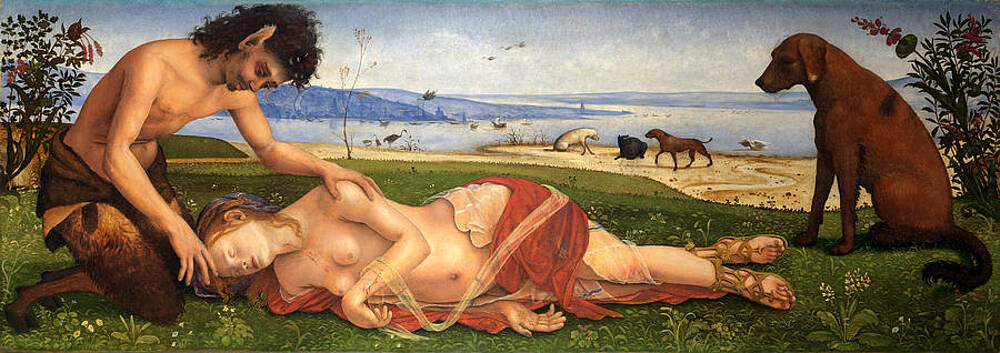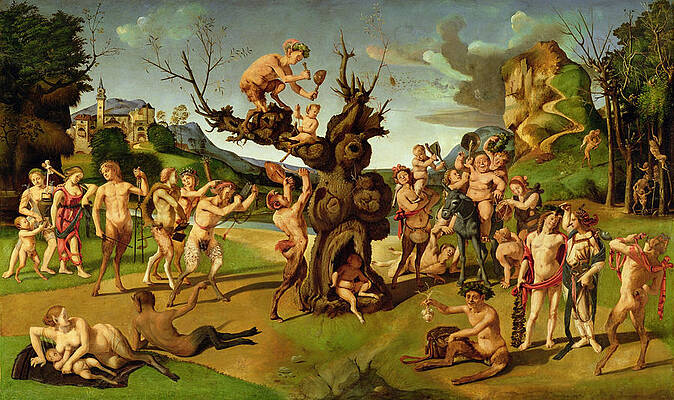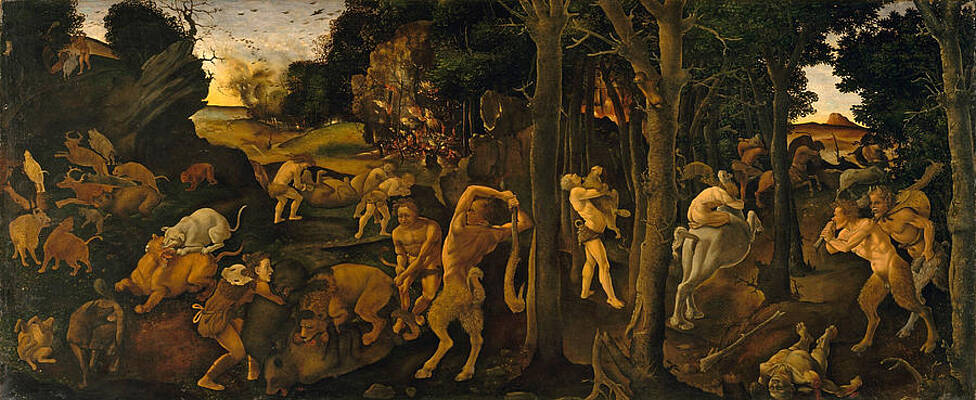Piero di Cosimo
Paintings
Portrait of Simonetta Vespucci
The Young Saint John the Baptist
Andromeda freed by Perseus
The Discovery of Honey by Bacchus
The Nativity with the Infant Saint John
The Fight between the Lapiths and the Centaurs
The Return from the Hunt
A Hunting Scene
The Misfortunes of Silenus
A Young Man
The Madonna and Child enthroned with Saints Onophrius and Augustine
Madonna and Child with Angels
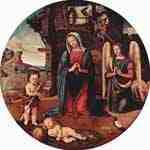

The fall of Vulcan (Hephaestus)Hunting scene

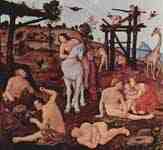
Vulcan ( Hephaestus ) and Aeolus

Forest fire The Death of Procris The Battle of the Centaurs and Lapiths
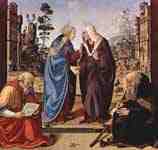


Madonna with St John the Baptist


Madonna with reading Christ Child


Mary, the child adoring , Tondo

Mystic Marriage of St. Catherine
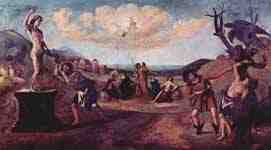

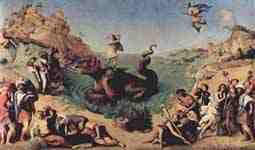

Andromeda freed by Perseus , detail : Andromeda

Andromeda freed by Perseus , detail : musicians

Andromeda freed by Perseus , detail : Perseus

Portrait of Francesco Giamberti
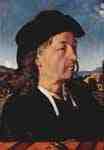
Portrait of Giuliano da Sangallo






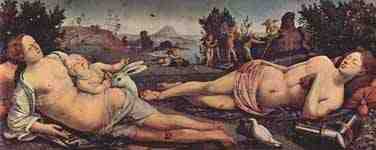
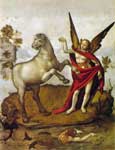
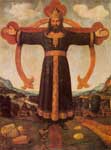
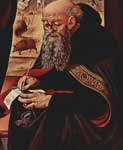

The Young Saint John the Baptist
Drawings



Fine Art Prints | Greeting Cards | Phone Cases | Lifestyle | Face Masks | Men's , Women' Apparel | Home Decor | jigsaw puzzles | Notebooks | Tapestries | ...
Andromeda freed by Perseus
Piero di Cosimo (2 January 1462 – 12 April 1522), also known as Piero di Lorenzo, was an Italian Renaissance painter.
Biography
The son of a goldsmith, Piero was born in Florence and apprenticed under the artist Cosimo Rosseli, from whom he derived his popular name and whom he assisted in the painting of the Sistine Chapel in 1481.
In the first phase of his career, Piero was influenced by the Netherlandish naturalism of Hugo van der Goes, whose Portinari Triptych (now at the Uffizi Gallery in Florence) helped to lead the whole of Florentine painting into new channels. From him, most probably, Cosimo acquired the love of landscape and the intimate knowledge of the growth of flowers and of animal life. The manner of Hugo van der Goes is especially apparent in the Adoration of the Shepherds, at the Berlin Museum.
He journeyed to Rome in 1482 with his master, Rosselli. He proved himself a true child of the Renaissance by depicting subjects of Classical mythology in such pictures as the Venus, Mars, and Cupid, The Death of Procris, the Perseus and Andromeda series, at the Uffizi, and many others. Inspired to the Vitruvius' account of the evolution of man, Piero's mythical compositions show the bizarre presence of hybrid forms of men and animals, or the man learning to use fire and tools. The multitudes of nudes in these works shows the influence of Luca Signorelli on Piero's art.
During his lifetime, Cosimo acquired a reputation for eccentricity—a reputation enhanced and exaggerated by later commentators such as Giorgio Vasari, who included a biography of Piero di Cosimo in his Lives of the Artists.[3] Reportedly, he was frightened of thunderstorms, and so pyrophobic that he rarely cooked his food; he lived largely on hard-boiled eggs, which he prepared 50 at a time while boiling glue for his artworks.[4] He also resisted any cleaning of his studio, or trimming of the fruit trees of his orchard; he lived, wrote Vasari, "more like a beast than a man".
If, as Vasari asserts, he spent the last years of his life in gloomy retirement, the change was probably due to preacher Girolamo Savonarola, under whose influence he turned his attention once more to religious art. The death of his master Roselli may also have had an impact on Piero's morose elder years. The Immaculate Conception with Saints, at the Uffizi, and the Holy Family, at Dresden, illustrate the religious fervour to which he was stimulated by Savonarola.
With the exception of the landscape background in Rosselli's fresco of the Sermon on the Mount, in the Sistine Chapel, there is no record of any fresco work from his brush. On the other hand, Piero enjoyed a great reputation as a portrait painter: the most famous of his work is in fact the portrait of a Florentine noblewoman, Simonetta Vespucci, mistress of Giuliano de' Medici. According to Vasari, Piero excelled in designing pageants and triumphal processions for the pleasure-loving youths of Florence, and gives a vivid description of one such procession at the end of the carnival of 1507, which illustrated the triumph of death. Piero di Cosimo exercised considerable influence upon his fellow pupils Albertinelli and Bartolomeo della Porta, and was the master of Andrea del Sarto.
Vasari gave Piero's date of death as 1521, and this date is still repeated by many sources, including the Encyclopædia Britannica.[5] However, contemporary documents reveal that he died of plague on 12 April 1522.[6]
Selected works
Madonna and Child Enthroned with Sts. Peter, John the Baptist, Dominic, and Nicholas of Bari (1481–85) tempera and oil on panel, St. Louis Art Museum, St. Louis, Missouri
Piero di Cosimo – Madonna and Child Enthroned with Saints
Portrait of Simonetta Vespucci (c. 1480) Oil on panel, 57 x 42 cm, Musée Condé, Chantilly, France
The Visitation with Saints Nicholas and Anthony (1489–1490) Wood, 184 x 189, National Gallery of Art, Washington
Venus, Mars, and Cupid (1490) Wood panel, 72 x 182 cm, Staatliche Museen, Berlin
Vulcan and Aeolus (c. 1490) Oil and tempera on canvas, National Gallery of Canada, Ottawa
St. Mary Magdalene (1490s) Tempera on panel, 72,5 x 76 cm, Galleria Nazionale d'Arte Antica, Rome
Mystical Marriage of St. Catherine of Alexandria (1493) Oil on panel, Ospedale degli Innocenti, Florence
Jason and Queen Hypsipyle with the Women of Lemnos (ca 1499) Private Collection[7]
Tritons and Nereids, Oil on Panel, 37x158 cm, Milan, Altomani collection
Allegory (1500) Panel, National Gallery of Art, Washington
St. John the Evangelest (1504–1506) oil on panel, Honolulu Museum of Art
The Discovery of Honey (c. 1505–1510) Oil on panel, Art Museum, Worcester, Massachusetts
The Finding of Vulcan on Lemnos (1495–1505) Oil and tempera on canvas, Wadsworth Atheneum, Hartford, Connecticut
Perseus Frees Andromeda c. 1515, Oil on wood, 70 x 123 cm, Uffizi, Florence
Giuliano da San Gallo (c. 1500) Wood panel, 47,5 x 33,5 cm, Rijksmuseum, Amsterdam
The Death of Procris (c. 1500) Oil on panel, 65 x 183 cm, National Gallery, London
Virgin with Child, St. John the Baptist and an Angel (c. 1500–1510) Oil on panel, diameter 129 cm, São Paulo Museum of Art, São Paulo
The Adoration of the Christ Child (1505) Oil on wood, Galleria Borghese, Rome
The Forest Fire (c. 1505) Oil on panel, 71 x 202 cm, Ashmolean Museum, Oxford
Immaculate Conception with Saints (c. 1510 or c. 1498) Wood panel, 206 x 172 cm, Uffizi, Florence
The Misfortunes of Silenus (c.1505–1510) Oil on panel, Fogg Art Museum, Cambridge, Massachusetts
The Myth of Prometheus (1515) Oil on panel, Alte Pinakothek, Munich and Musée des Beaux-Arts, Strasbourg
The Building of a Palace (1515–1520) oil on panel, 83 x 197 cm, Ringling Museum of Art, Sarasota, Florida
Madonna and Child with Saints and Angels (c.1520) oil on wood panel, Philbrook Museum of Art, Tulsa, Oklahoma
References
After much uncertainty, Piero's birth date was identified in the parish records of San Lorenzo by Dennis Geronimus, "The Birth Date, Early Life, and Career of Piero di Cosimo", The Art Bulletin 82.1 (March 2000:164–170); Geronimus was able to rely on the consistency of Lorenzo di Piero d'Antonio's reports of his children's ages at the catasti of 1469 and 1480, and a new database of Florentine baptismal records.
Godfrey, F.M. (1976). "Piero di Cosmio". In William D. Halsey. Collier's Encyclopedia 19. New York: Macmillan Educational Corporation. p. 42.
Fermor, Sharon (1997). Piero di Cosimo: Fiction, Invention, and Fantasia. Reaktion Books. pp. 7–9 and ff.
Original information sourced from: William Griswold. "Piero di Cosimo." Grove Art Online. Oxford Art Online. Oxford University Press. Web. 5 Aug. 2014. <http://www.oxfordartonline.com/subscriber/article/grove/art/T067492>.
"Piero Di Cosimo". Encyclopædia Britannica. Encyclopædia Britannica Online. 2006. Retrieved 2006-10-28.
Waldman, Louis Alexander (March 2000). "Fact, Fiction, Hearsay: Notes on Vasari's Life of Piero di Cosimo". The Art Bulletin (The Art Bulletin, Vol. 82, No. 1) 82 (1): 171–9. doi:10.2307/3051370. JSTOR 3051370.
Dennis Geronimus, Piero Di Cosimo: Visions Beautiful and Strange, (Yale University Press), 2006 fig. 122
Public Domain This article incorporates text from a publication now in the public domain: Chisholm, Hugh, ed. (1911). Encyclopædia Britannica (11th ed.). Cambridge University Press.
----
Fine Art Prints | Greeting Cards | Phone Cases | Lifestyle | Face Masks | Men's , Women' Apparel | Home Decor ...
----
Artist
A - B - C - D - E - F - G - H - I - J - K - L - M -
N - O - P - Q - R - S - T - U - V - W - X - Y - Z
Retrieved from "http://en.wikipedia.org/"
All text is available under the terms of the GNU Free Documentation License


